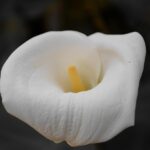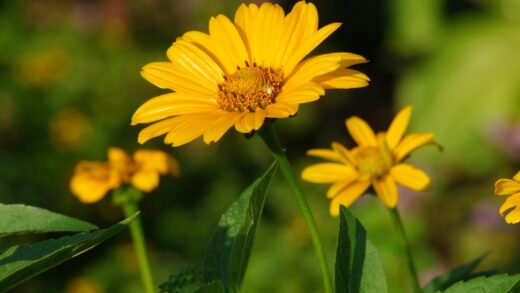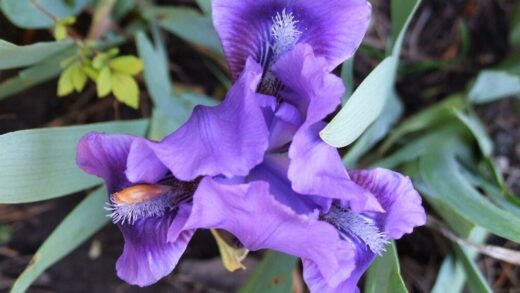Successfully overwintering the Balkan bellflower is a relatively straightforward process, as this species is inherently hardy and well-adapted to surviving cold temperatures. Native to the mountainous regions of the Balkans, it possesses a natural resilience that allows it to withstand significant winter chill, typically being hardy in USDA zones 3 through 8. For gardeners in these zones, the plant requires very little special attention to make it through the winter months. The primary goal of winter care is not to shield it from the cold itself, but rather to protect it from the specific challenges that winter can bring, such as excessive moisture, freeze-thaw cycles, and winter sun scorch. Understanding how to provide the right conditions will ensure that your plant not only survives but emerges in the spring ready for another season of vigorous growth.
In most regions where the Balkan bellflower is hardy, it will behave as a semi-evergreen or deciduous perennial. This means that in milder climates, it may retain some or all of its foliage throughout the winter, although the leaves may take on a bronze or reddish tinge in response to the cold. In colder climates, the top growth will typically die back to the ground after the first hard frosts. This is a natural and healthy process of dormancy, where the plant conserves its energy in its root system, waiting for the warmth of spring to signal the start of new growth. It is important for gardeners to recognize this as a normal part of the plant’s life cycle and not a sign that the plant has died.
The most significant threat to the Balkan bellflower during the winter is not the cold temperature but rather wet, soggy soil. The combination of cold and wet is a deadly one for this plant, as it creates the perfect conditions for crown and root rot. This is why establishing the plant in well-draining soil from the very beginning is the most crucial aspect of ensuring its winter survival. If the plant’s roots are sitting in cold, waterlogged soil, they are highly susceptible to decay, and the plant may not reappear in the spring. Therefore, any efforts to improve drainage before planting will pay dividends in winter hardiness.
Preparing the plant for winter in the autumn is a simple matter of basic garden hygiene. As the foliage begins to die back, you can choose to trim it down, leaving a few inches of stems above the ground. Alternatively, you can leave the faded foliage in place over the winter. This can provide a small amount of extra insulation for the plant’s crown and can also help to trap insulating snow cover. The decision often comes down to personal preference regarding the tidiness of the winter garden. If you do leave the foliage, it is important to clear it away promptly in early spring to allow for good air circulation and to make way for the emerging new shoots.
Preparing for dormancy
As autumn progresses and the days shorten and cool, the Balkan bellflower will naturally begin to prepare for its winter dormancy. This is a period of transition where the plant’s growth slows significantly as it shifts its energy from producing leaves and flowers to storing resources in its root system for the winter. During this time, it is important to adjust your care routine accordingly. One of the most critical changes is to cease all fertilization by the late summer or early autumn. Applying fertilizer late in the season can stimulate tender new growth that will not have time to harden off before the first frosts and will be highly susceptible to winter damage.
More articles on this topic
Watering should also be gradually reduced in the autumn. As the plant’s growth slows, its demand for water decreases. Cooler temperatures and potentially more frequent rainfall also mean that the soil will stay moist for longer. Continuing to water at summer levels can lead to the very waterlogged conditions that are so detrimental to the plant’s winter survival. Allow the soil to dry out more between waterings, and let natural rainfall take over as the primary source of moisture. The goal is to have the soil be just barely moist, not wet, as the plant enters its dormant period.
The question of whether or not to cut back the foliage in the autumn is a common one. There are valid arguments for both approaches. Cutting back the dead and dying foliage to a height of about two inches can give the garden a neater, tidier appearance over the winter and can reduce the chances of fungal spores or pest eggs overwintering in the debris. This also makes the spring cleanup easier. On the other hand, leaving the foliage intact provides a natural layer of insulation for the crown of the plant, which can be beneficial in colder climates or in gardens with little snow cover.
If you do choose to leave the foliage in place for the winter, it is crucial to remove it in the very early spring, just as the first signs of new growth appear at the base of the plant. This cleanup removes the old, dead material, allows sunlight and air to reach the crown, and prevents the old leaves from smothering the delicate new shoots. This simple act of spring cleaning gives the plant a fresh start and ensures that it has the best possible conditions for its initial burst of spring growth.
The role of mulch
Applying a winter mulch can be a beneficial practice for overwintering Balkan bellflower, especially in colder climates (zones 3-5) or in areas where snow cover is unreliable. The primary purpose of a winter mulch is not to keep the plant warm, but rather to insulate the soil and keep it frozen. This helps to protect the plant’s roots from the damaging effects of repeated freeze-thaw cycles. When the ground freezes and thaws multiple times over the winter, it can heave the soil, potentially pushing the plant’s crown and roots up out of the ground and exposing them to drying winds and cold temperatures.
More articles on this topic
The best time to apply a winter mulch is in the late autumn or early winter, after the ground has frozen but before the coldest temperatures of the season have arrived. Applying the mulch too early, while the ground is still warm, can trap heat and moisture, potentially leading to crown rot and providing a cozy home for rodents that might gnaw on the plant’s crown. Waiting for the ground to freeze ensures that the plant is fully dormant and that the mulch will serve its intended purpose of maintaining a consistent soil temperature.
The ideal materials for a winter mulch are light and airy, allowing for some air circulation while still providing insulation. Shredded leaves, pine needles, or straw are excellent choices. These materials will not compact heavily over the plant’s crown and will help to trap a layer of air, which is an effective insulator. Avoid using heavy, dense materials like wet leaves or thick layers of compost right over the crown, as these can hold too much moisture and promote rot. Apply a loose layer of your chosen mulch, about two to four inches deep, over the top of the plant.
In the spring, as the threat of hard frosts has passed and you begin to see new growth emerging, it is important to gradually remove the winter mulch. Rake it away from the crown of the plant to allow the soil to warm up and to give the new shoots access to sunlight and air. Leaving the mulch in place for too long can delay the plant’s emergence and can create damp conditions that are conducive to disease. The removed mulch can be added to your compost pile, recycling its organic matter back into the garden.
Winter care for container-grown plants
Balkan bellflowers grown in containers are significantly more vulnerable to winter cold than those planted in the ground. The soil in a pot has very little insulating capacity, meaning the roots are exposed to the ambient air temperature on all sides. In a cold climate, the soil in a container can freeze solid very quickly, which can kill the roots and, consequently, the entire plant, even if the species is normally hardy in that zone. Therefore, container-grown plants require special protective measures to survive the winter.
One of the most effective methods for protecting a potted Balkan bellflower is to move the container to a more sheltered location. An unheated garage, a cold frame, a shed, or a protected porch are all suitable options. The goal is to keep the plant in a location that is cold enough to allow it to remain dormant but that protects the roots from the harshest temperature extremes. The plant does not require light during its dormancy, so a dark location like a garage is perfectly acceptable.
If moving the container is not feasible, you can try to insulate it in place. Group several pots together to reduce their surface area exposure to cold winds. You can also wrap the container in bubble wrap or burlap, or mound insulating materials like straw or shredded leaves around the pots. Another technique is the “pot-in-pot” method, where you sink the plant’s container directly into an empty garden bed for the winter. The surrounding soil provides excellent insulation for the roots, mimicking the protection a plant in the ground would naturally have.
Watering for container-grown plants during the winter is a delicate balance. You do not want the soil to be wet, but you also cannot let it dry out completely, as this can desiccate and kill the roots. The soil should be kept just barely moist. In a sheltered location like a garage, you may only need to water the pot once a month or even less. Check the soil periodically, and if it is bone dry, give it a small amount of water. In the spring, once the danger of hard frosts has passed, you can move the container back to its summer location and resume your normal care routine.

















